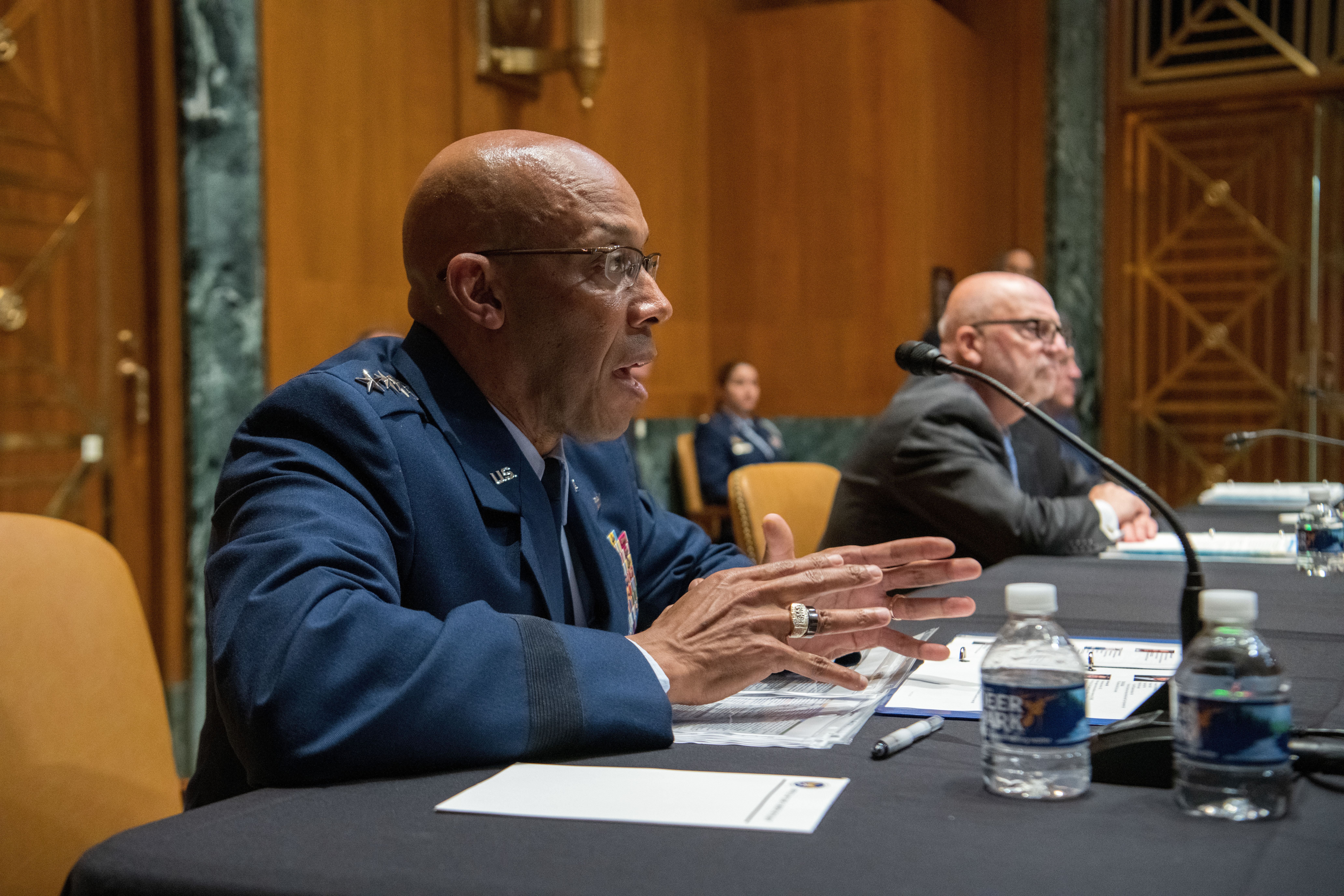Even with a 3 percent to 5 percent increase in the defense budget, losing a conflict with China still becomes a “distinct possibility” without both aircraft cuts and a fundamental change in how the Air Force structures itself for war, Chief of Staff Gen. Charles Q. Brown Jr. warned lawmakers June 16.
Asked by House Armed Services Committee ranking member Rep. Mike Rogers (R-Ala.) whether Brown agrees with the 2018 National Defense Strategy Commission’s finding that Pentagon spending should be increased 3 percent to 5 percent, Brown replied simply, “I do.”
Brown said he shares the committee’s concerns over the defense budget’s top line, saying that’s “exactly why I wrote ‘Accelerate Change or Lose’—because I do see risk if we do not.”
The fiscal 2022 budget prioritizes modernization, which drove the Air Force to request retiring some systems now “to ensure that we do not have future risk,” Brown said. He declined to say the Air Force needs a bigger share of the budget despite its key role in deterring China in the Indo-Pacific.
In his opening statement, Brown said the Air Force must bring about change faster because if it continues with “incremental” improvements, “losing becomes a distinct possibility.”
Under questioning from Chairman Rep. Adam Smith (D-Wash.), Brown said he’s confident the budget matches the “vision” of a 10- to 15-year evolution in the fighter force to a more capable fleet able to deal with China’s rise in the Indo-Pacific.
“We are in a position of transition,” Brown said.
The Air Force is replacing the F-15C with the F-15EX because the C model is “really starting to show its age.” Meanwhile, the service is retaining the youngest F-16s, which can serve “another 15-20 years.” The budget calls for cutting 42 A-10s, with the remaining modernized fleet serving “into the middle of the next decade,” he said. The F-35 will remain the “cornerstone” of the force.
The F-22 will receive upgrades to serve for the same timeframe, then the Next-Generation Air Dominance fighter will succeed it. Collectively, Brown refers to this scheme as the “four plus one” fighter fleet plan: the NGAD, F-35, F-15EX, F-16, and A-10.
When asked by Rogers if the committee will receive the service’s Future Years Defense Plan, Roth deferred to the Pentagon.
“You have to understand that as we prepared this FY 22 budget with the Office of the Secretary of Defense,” Roth continued, “given the focus on the short timeframe—and we were late to begin with—but given the short timeframe, the focus was entirely on FY 22. There were no decisions made about the out years, so there really isn’t an out-years FYDP to be provided at this time.”
Under questioning from Rep. Elaine Luria (D-Va.), Brown declined to offer an opinion about whether the U.S. would ever invade China by land or why the “AirSea Battle” concept by the Air Force and Navy, according to Luria, “did not survive first contact with the Joint Staff.” She said a spokesman said the land component was missing from the concept.
“Think about that,” she said. “The missing part of an AirSea Battle concept was the land portion. … I guess the spokesman forgot about the Marine Corps.” Brown said that in the Western Pacific, “Air definitely plays a role.”
He added, “To me, I really do see air and sea, but really, across the Joint team and across all domains is where I expect that conflict to occur.” He said it’s hard to predict if a land invasion would be required but that he wants “to make sure we have options in the future.”
Luria asked Brown if the “1/3, 1/3, 1/3” divisions of funds for the services makes sense in the context of conflict with China and whether he believes “the Air Force and Navy require more resources to deal with this current conflict?” Brown responded that “naturally I’d like to have more” but that the services have to parse out “the redundancies we have” in the context of the Joint Warfighting Concept “to ensure we have the right capabilities for the Joint Force.”
Luria said she wanted to underscore “that I really, strongly believe the Air Force and Navy have a larger role to play in the Western Pacific and was hoping you would come here—just as (Chief of Naval Operations) Adm. (Michael M.) Gilday yesterday—and advocate for that because I think this is truly essential to the defense of our nation and what we might face in the Western Pacific in the future.”


